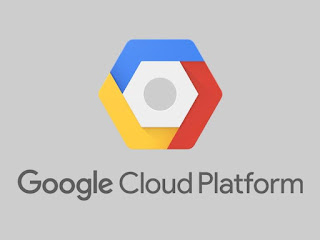Computing Components of Google Cloud Platform Services
- Computing resources
- Storage resources
- Databases
- Networking services
- Identity management and network security
- Development tools
- Management tools
- Specialized services
Computing Components of Google Cloud Platform 17 A Google-certified Associate Cloud Engineer should be familiar with the services in each category, how they are used, and the advantages and disadvantages of the various services in each category.
Public cloud services provide a range of computing services options. At one end of the spectrum, customers can create and manage VMs themselves.
The Cloud platform gives the cloud user the greatest control of all computing services. Users can choose the operating system(OS) to run, which packages to install and when perform other maintenance operations and back up. This type of computing service is typically referred to as infrastructure as a service (IaaS).
An alternative model is called platform as a service (PaaS), which provides a runtime environment to execute applications without the need to manage underlying servers, networks, and storage systems. GCP’s IaaS computing product is called Compute Engine, and the PaaS offerings are App Engine and Cloud Functions. In addition, Google offers Kubernetes Engine, which is a service for managing containers in a cluster; this type of service is an increasingly popular alternative to managing individual sets of VMs.
Compute Engine:
The Cloud platform gives the cloud user the greatest control of all computing services. Users can choose the operating system(OS) to run, which packages to install and when perform other maintenance operations and back up. This type of computing service is typically referred to as infrastructure as a service (IaaS).
An alternative model is called platform as a service (PaaS), which provides a runtime environment to execute applications without the need to manage underlying servers, networks, and storage systems. GCP’s IaaS computing product is called Compute Engine, and the PaaS offerings are App Engine and Cloud Functions. In addition, Google offers Kubernetes Engine, which is a service for managing containers in a cluster; this type of service is an increasingly popular alternative to managing individual sets of VMs.
Compute Engine:
Compute Engine is a service that allows users to create VMs, attach persistent storage to those VMs, and make use of other GCP services, such as Cloud Storage.
VMs are abstractions of physical servers. They are essentially programs that emulate physical servers and provide CPU, memory, storage, and other services that you would find if you run your favorite operating system on a server under your desk and data center. VMs run within a low-level service called a hypervisor.
GCP uses a security-hardened version of the KVM hypervisor. KVM stands for Kernel Virtual Machine and provides virtualization on Linux systems running on x86 hardware. Hypervisors run on an operating system like Linux or Windows Server. Hypervisors can run multiple operating systems, referred to as guest operating systems, while keeping the activities of each isolated from other guest operating systems. Each instance of an executing guest OS is a VM instance.
Kubernetes Engine:
VMs are abstractions of physical servers. They are essentially programs that emulate physical servers and provide CPU, memory, storage, and other services that you would find if you run your favorite operating system on a server under your desk and data center. VMs run within a low-level service called a hypervisor.
GCP uses a security-hardened version of the KVM hypervisor. KVM stands for Kernel Virtual Machine and provides virtualization on Linux systems running on x86 hardware. Hypervisors run on an operating system like Linux or Windows Server. Hypervisors can run multiple operating systems, referred to as guest operating systems, while keeping the activities of each isolated from other guest operating systems. Each instance of an executing guest OS is a VM instance.
Kubernetes Engine:
Kubernetes Engine is designed to allow users to easily run containerized applications on a cluster of servers. Containers are often compared to VMs because they are each used for isolating computing processing and resources. Containers take a different approach than VMs for isolating computing processes. As mentioned, a VM runs a guest operating system on a physical server. The physical server runs an operating system as well, along with a hypervisor. Another approach to isolating computing resources is to use features of the host operating system to isolate processes and resources. With this approach, there is no need for a hypervisor; the host operating system maintains isolation. Instead, a container manager is used. That is, a single container manager coordinates containers running on the server. No additional, or guest, operating systems run on top of the container manager. Instead, containers make use of host operating system functionality, while the operating system and container manager ensure isolation between the running containers.
Cloud Storage:
Cloud Storage:
Cloud Storage is GCP’s object storage system. Objects can be any type of file or binary large object. Objects are organized into buckets, which are analogous to directories in a file system. It is important to remember that Cloud Storage is not a file system. It is a service that receives, stores, and retrieves files or objects from a distributed storage system. Cloud Storage is not part of a VM in the way an attached persistent disk is. Cloud Storage is accessible from VM (or any other network device with appropriate privileges) and so complements file systems on persistent disks.
The Firebase Mobile app is best combination of cloud storage and the ability to support downloads and uploads from mobile devices with sometimes unreliable network connections. The Cloud Storage for Firebase API is designed to provide secure transmission as well as robust recovery mechanisms to handle potentially problematic network quality. Once files, like photos or music recordings, are uploaded into Cloud Storage, you can access those files through the Cloud Storage command-line interface and software development kits (SDKs).
The Firebase Mobile app is best combination of cloud storage and the ability to support downloads and uploads from mobile devices with sometimes unreliable network connections. The Cloud Storage for Firebase API is designed to provide secure transmission as well as robust recovery mechanisms to handle potentially problematic network quality. Once files, like photos or music recordings, are uploaded into Cloud Storage, you can access those files through the Cloud Storage command-line interface and software development kits (SDKs).
More details click here :-
Get Quiz Answers:
Cloud Computing Basics (Cloud 101) Course Quiz Answers







0 Comments